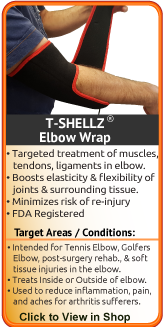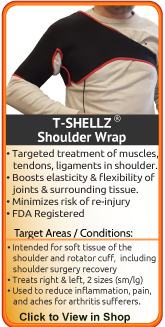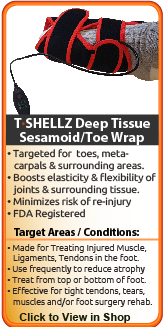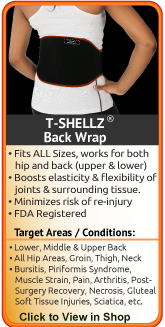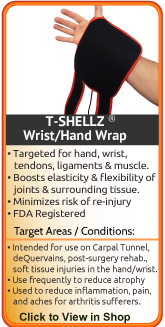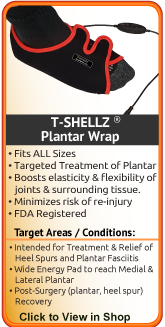Infrapatellar Bursitis Symptoms
Infrapatellar bursitis symptoms are similar to the symptoms of bursitis that occur in other joints in the body; swelling and tenderness, pain, limited range of motion, weakness, and possibly a fever if the bursa is infected.
Knee Pain
If you are suffering from infrapatellar bursitis, you will experience pain and tenderness over top of the kneecap as the bursa sits over the kneecap. The pain may radiate down your leg to the mid-calf. Due to the location of the bursa, pain will make kneeling difficult.
Bursitis pain becomes worse during exercise or when you are climbing stairs, but can also increase by simply bending and straightening your knee. The knee pain caused by bursitis usually starts gradually and develops over a few days or even months.
Difficulties Sleeping
Patients suffering from knee bursitis may also have interrupted sleep patterns. Simply bending your knee or rolling over during sleep can cause pressure on the inflamed bursa, increasing your pain. The pain can range from mild to very sharp depending on the amount of swelling and inflammation in the bursa. Many knee bursitis sufferers recommend placing a pillow between your knees/thighs while you sleep to reduce pain throughout the night.
Swelling, Tenderness, Warmth, and Redness
Swelling is usually evident with infrapatellar bursitis and often appears as an abscess over or below the kneecap. This swelling may appear immediately following trauma, over a couple of hours, or up to 7-10 days after the event that caused the irritation.
You may also notice warmth and visible redness on your skin in the area as inflammation in the bursa and along the tendons becomes more severe.
Limited Range of Motion and Weakness
When you have infrapatellar bursitis in your knee, the pain often limits your knee movements as you stop performing motions that make the pain worse. If bursitis is left untreated the inflammation can increase, causing more pain, limiting movement even more. Eventually, weakness in the leg muscles and and tendons around the knee can set in. As you lose strength in your quadriceps, your legs may begin to give out during daily activities.
It is important to treat bursitis in the early stages to reduce the symptoms, minimize damage and maintain motion and strength in your knee. Eliminate any squatting, repetitive knee bending, crossing your legs, kneeling or any other activities that add pressure on your bursa. By treating your infrapatellar bursitis in the early stages by using a Cold Compress and a Knee TShellz® Circulatory Boost Wrap, you are more likely to prevent long-term damage and chronic conditions from setting in.
Infrapatellar Bursitis Home Remedies
What You Need To Know
We Have Advanced Treatment Tools to Help You
Get Rid of Your Bursitis
The most important factor in healing infrapatellar bursitis is resting your knee. This can be difficult when you have to carry on with daily activities, but resting whenever you can is recommended. During your recovery you will probably have to modify or avoid the activities that stress your bursa until your pain and inflammation settle.
The good news is that most cases of infrapatellar bursitis will heal with simple home conservative treatments and surgery is often not needed
It's generally understood by doctors and surgeons that surgery will introduce more scar tissue into the tendons and ligaments in your knee. This added scar tissue will be problematic, requiring visits to the physio clinic and conservative treatment options post-surgery. When it comes to infrapatellar bursitis there's only a few surgical options for treatment - removal of the bursa sac, scraping of the bone(s) to allow more room for the new bursa to grow back. This is why surgery is only performed as a last resort for chronic knee bursitis that won't heal with conservative treatment methods.
Relieving the pain of your sore knee and the symptoms of bursitis initially focuses on keeping the pressure off the bursa. If your infrapatellar bursitis was caused due to the nature of your work, you really need to stop that type of work until the bursitis is gone. For non-infectious bursitis, the preliminary treatment will almost always start with conservative treatment options.
Some conservative treatment methods recommended include:
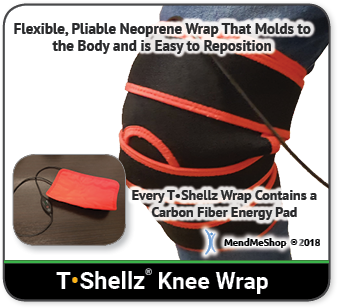 - Rest - This is important for initial healing because without proper rest you're at risk for increased pain, inflammation. If you are not resting your knee, the condition will probably worsen, possibly becoming chronic (persistent, long term).
- Avoid Activities that Caused Your Patellar Bursitis - While resting your knee it's also important to avoid all activities that may have caused your infrapatellar bursitis, including any work related tasks that require kneeling or pressure on the knees. Continuing on with regular activities can increase the severity of bursitis, turning a mild to moderate case of injury into serious damage or leading to injuries in other areas due to overcompensation.
- Apply a Cold Compress or Ice Pack for Inflammation - Immediate cold at the onset of your injury (or during flareups) will help you combat the pain and inflammation of bursitis and tendinitis. Immediate pain relief and reduced inflammation can also relieve some of the pressure that's being placed on soft tissue in the knee and keep the injury from worsening.
- Use a Knee TShellz Wrap® - Once swelling has been reduced, you can use your own blood flow to maximize your rehabilitation. Improved blood flow to your knee in most cases will help improve recovery time while improving overall health of soft tissue in the area. Promoting blood flow and heat to the treatment area will help to minimize the growth of scar tissue, increase flexibility and help prevent atrophy.
- Rehabilitative Stretching under supervision of a PT or doctor. The intent of this is to provide you with increased range of motion, pain relief and strengthening of the surrounding tissue of the joint. Doctors or surgeons typically won't perform a surgery until they feel that their patient has put effort into treating their injury with conservative treatment methods. This may include up to 4 to 6 months of visits to a PT clinic. If you haven't experienced any improvement in your condition during that time then surgery may be considered. Agressive PT approaches may focus on forced or manual manipulation of the leg/knee - this means your physical therapists will be trying to move your knee past the point of comfort as they strive to increase range of motion and prevent further atrophy. This can be painful and end up making your injury worse if not done correctly. (reference: 1)
- Stretching - Stretching your joint in PT and at home will help you to regain your range of motion much faster than not stretching at all. Stretching in many ways is key maintaining good Range of Motion (ROM) in your joint, and stretching can be made much easier with use of a TShellz Wrap® before to warm up soft tissue, and a Cold Compress or Ice Pack treatment after to prevent any return of swelling and inflammation.
Learn More About Bursitis Injuries & TreatmentsI want to learn more about Post-Surgery Recovery I want to learn more about TShellz Wrap® Circulatory Boost I want to learn more about Ice & Heat: Which Is Better For Treatment? I want to learn more about Bursitis Treatments I want to learn more about Bursitis Surgery
FREE SHIPPING ON ALL PRODUCTS CURRENTLY ENABLED
60 DAY TRIAL PERIOD
During your recovery, you will probably have to modify and/or eliminate any activities that cause pain or discomfort at the location of your soft tissue injury until the pain and inflammation settle. The more diligent you are with your treatment and rehabilitation, the faster you will see successful results!
| 